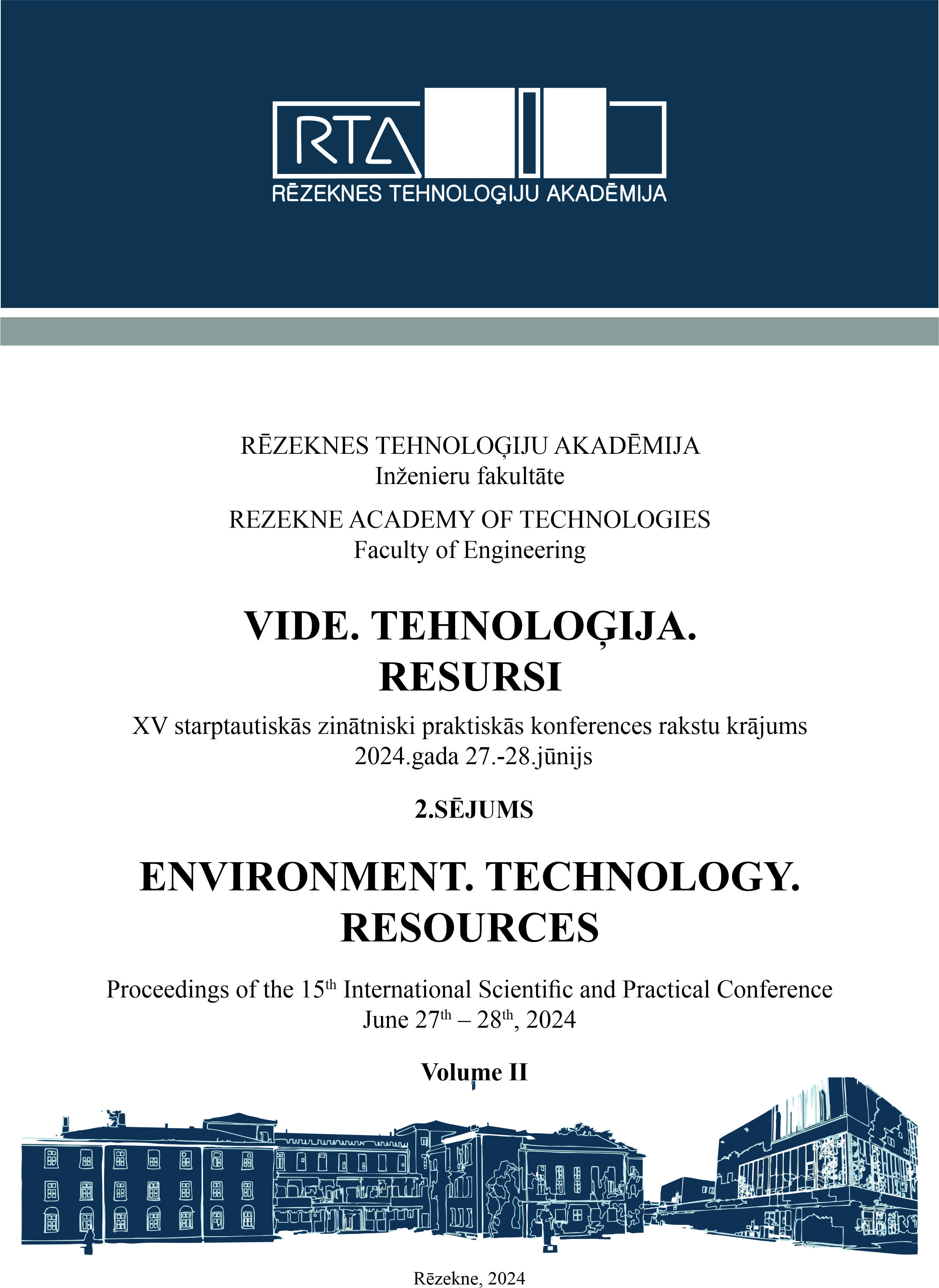ENSURING INFORMATION SECURITY IN THE INTELLIGENT SCIENTIFIC AND TECHNICAL INFORMATION SYSTEMS
DOI:
https://doi.org/10.17770/etr2024vol2.8042Keywords:
information security, intelligent system, scientific and technical information, information retrieval, behavioural analysisAbstract
Scientific and scientific-technical information is a valuable tool for the development of education, technology and society as a whole. The increase in the volume of information and the development of information networks of data exchange requires special means to ensure information protection of data. Methods, means and systems for information security of scientific, technical and scientific-educational resources in intellectual information systems are of particular importance. The purpose of the research is to develop methods and software tools to ensure information security of valuable scientific and technical information resources in intelligent information systems.
The proposed solution for intrusion detection in intelligent system is a web application firewall, which is used for enhanced security, detecting and preventing attacks before they reach the web application. It will protect the system from a whole range of attacks while allowing HTTP traffic monitoring and analyzing small changes or persistent state online. The Web Application Firewall (WAF) has the following features: logging of all HTTP protocol transactions, including request termination permissions and logging of the response; HTTP traffic can be examined in real time to detect attacks; preventing attacks before they reach the web application.
This work is performed within the framework of the project on creation of an integrated intelligent system “SMART TUIT”, which includes several subsystems (Information Retrieval, Voice Recognition, Pattern Recognition, Scientific Information Assessment, Geoinformation System).
References
M. Rakhmatullaev, Sh. Normatov and F. Bekkamov, Fuzzy model for determining the information needs of library users, 14th international scientific and practical conference: Environment. Technology. Resources, June 15-16, 2023, Rezekne. Rezekne Academy Of Technologies.
M. Bendechache, N. Limaye and R. Brennan, "Towards an Automatic Data Value Analysis Method for Relational Databases,", presented at the 22nd International Conference on Enterprise Information Systems, 2020.
I. M. Omame and J. C. Alex-Nmecha, "Artificial Intelligence in Libraries," presented at the 22nd International Conference on Enterprise Information Systems, vol.2: ICEIS, 2020, pp. 833-840.
J. J. Shahid, M.K. Hameed, I.T. Javed, K.N. Qureshi, M. Ali and N. Crespi, "A Comparative Study of Web Application Security Parameters: Current Trends and Future Directions, ", Applied Sciences, vol. 12, no. 8: 4077, 2022.
J. Clarke, SQL Injection Attacks and Defense, 2nd ed., MA: Syngress, 2012. [E-book] Available: StudyLib, https://studylib.net/doc/26304630/sql-injection-attacks-and-defense.pdf---pdfdrive--.
G. Betarte, E. Gimenez, R. Martinez and A. Pardo, "Improving Web Application Firewalls through Anomaly Detection," 17th IEEE International Conference on Machine Learning and Applications (ICMLA), Orlando, FL, USA, 2018, pp. 779-784.
R. Dubey and H. Gupta, "SQL filtering: An effective technique to prevent SQL injection attack," 5th International Conference on Reliability, Infocom Technologies and Optimization (Trends and Future Directions) (ICRITO), Noida, India, 2016, pp. 312-317.
K. Kim and S. Oh, "Edge Computing System applying Integrated Object Recognition based on Deep Learning," 24th International Conference on Advanced Communication Technology (ICACT), PyeongChang Kwangwoon_Do, Republic of Korea, 2022, pp. 415-419.
G. Yolcu et al., "Deep learning-based facial expression recognition for monitoring neurological disorders," IEEE International Conference on Bioinformatics and Biomedicine (BIBM), Kansas City, MO, USA, 2017, pp. 1652-1657.
X. Liu, H. A. Ounifi, A. Gherbi, W. Li and M. Cheriet, " A hybrid GPU-FPGA based design methodology for enhancing machine learning applications performance ," Journal of Ambient Intelligence and Humanized Computing, vol.6, 2020, pp. 2309-2323.
Downloads
Published
Issue
Section
License
Copyright (c) 2024 Komil Kerimov, Zarina Azizova, Fayzi Bekkamov, Mekhriddin Rakhimov, Mannon Ochilov

This work is licensed under a Creative Commons Attribution 4.0 International License.



